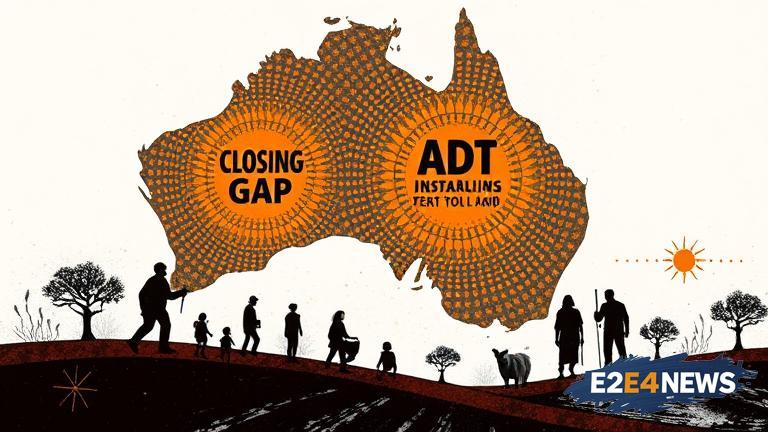The Australian government’s Closing the Gap report, released on July 31, 2025, has revealed a disturbing lack of progress towards achieving equality for Indigenous Australians. The report, which tracks the country’s performance against a set of targets aimed at reducing the disparities between Indigenous and non-Indigenous Australians, shows that many of the key indicators are moving in the wrong direction. In education, for example, the gap in literacy and numeracy rates between Indigenous and non-Indigenous students has widened, with only 34% of Indigenous students meeting the national minimum standards in reading and 29% in numeracy. The report also highlights a decline in the number of Indigenous students completing year 12, with a drop from 62% in 2020 to 58% in 2025. Furthermore, the employment gap between Indigenous and non-Indigenous Australians has increased, with the unemployment rate for Indigenous people rising to 18.1%, compared to 5.1% for non-Indigenous people. The healthcare outcomes for Indigenous Australians are also a major concern, with the report showing that the life expectancy gap between Indigenous and non-Indigenous Australians has increased, with Indigenous Australians living on average 8.6 years less than non-Indigenous Australians. The report also highlights significant disparities in infant mortality rates, with Indigenous babies being twice as likely to die in the first year of life as non-Indigenous babies. Additionally, the report notes that the number of Indigenous Australians in prison has increased, with Indigenous people making up 27% of the prison population, despite accounting for only 3.6% of the overall population. The report’s findings have been met with widespread criticism, with many arguing that the government’s approach to addressing the disparities between Indigenous and non-Indigenous Australians is failing. The Australian government has responded to the report by acknowledging the need for a new approach, with the Prime Minister stating that the government will work with Indigenous leaders and communities to develop a new set of targets and strategies. However, many are skeptical about the government’s commitment to change, given the lack of progress over the past decade. The report’s findings have also sparked a renewed debate about the need for constitutional recognition of Indigenous Australians, with many arguing that this is essential for addressing the systemic inequalities faced by Indigenous people. The Australian Labor Party has pledged to hold a referendum on constitutional recognition if it wins the next election, while the Liberal Party has expressed opposition to the idea. The report’s release has also coincided with a growing movement of Indigenous activism, with many Indigenous Australians taking to social media to share their experiences and call for change. The movement, which is using the hashtag #ClosingTheGap, is demanding that the government take immediate action to address the disparities between Indigenous and non-Indigenous Australians. The report’s findings have also been met with concern from international organizations, with the United Nations expressing disappointment at the lack of progress towards achieving the Sustainable Development Goals. The report’s release has sparked a national conversation about the need for a new approach to addressing the disparities between Indigenous and non-Indigenous Australians, with many calling for a more nuanced and multifaceted approach that takes into account the complex and interconnected nature of the issues. Ultimately, the report’s findings serve as a stark reminder of the need for urgent and sustained action to address the systemic inequalities faced by Indigenous Australians, and to work towards a more equitable and just society for all. The government’s response to the report will be closely watched, as will the actions of Indigenous leaders and communities, as they work together to develop a new set of targets and strategies. The report’s release has also highlighted the need for greater accountability and transparency in the government’s approach to addressing the disparities between Indigenous and non-Indigenous Australians, with many calling for more regular and detailed reporting on progress towards the targets. The report’s findings have also sparked a renewed focus on the importance of Indigenous-led solutions, with many arguing that these are essential for addressing the complex and nuanced nature of the issues. The report’s release has also coincided with a growing recognition of the need for a more nuanced and multifaceted approach to addressing the disparities between Indigenous and non-Indigenous Australians, one that takes into account the social, economic, and cultural factors that contribute to these disparities. The report’s findings serve as a stark reminder of the need for urgent and sustained action to address the systemic inequalities faced by Indigenous Australians, and to work towards a more equitable and just society for all.
